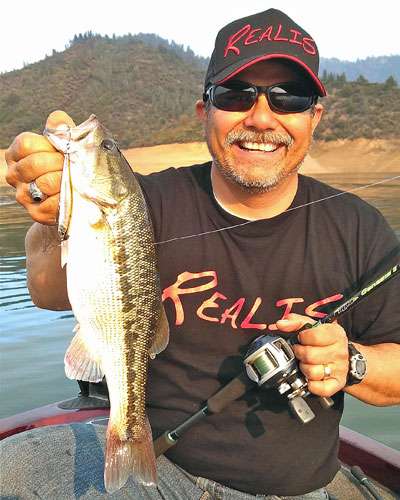
When a technique hits a body of water for the first time, it has the ability to trump the lake’s most prevalent winning techniques. And the angler who is bold enough to try a new technique may be proven the most prescient when the fish are weighed.
Showing the fish something they have yet to encounter reminds me of a business term called the first-mover advantage. The first mover is the one who jumps at an opportunity first, brings a new idea to a non-flooded market, and takes all the untapped resources that come with it. In our case, this concept relates closely to fishing and the resources can potentially be a livewell full of big fish.
One of the first movers on the Japanese technique of spybaiting was David Swendseid, a West Coast big-bass guru out of Washington State. Swendseid has taken the diminutive Duo Realis Spinbait 80 and made a big splash with it, and the craze is sweeping the country. Perhaps no one has had more time with the Spinbait 80 and the technique it spawned than Swendseid. Through his hours on the water, he’s found the most effective retrieve is a slow and steady one. This allows the bait’s natural almost unperceivable action to come out. The fall is an action in itself: after splashdown, the bait shimmies back-and-forth almost like a soft stickworm.
Swendseid urges anglers to try spybaiting for at least two hours. An ideal setup is a drop shot rod with line no larger than 8-pound-test. Any heavier and the action of the lure is adversely affected. He also advises you to use the lightest line you can get away with. He prefers 4- and 5-pound test.
Because spybaiting is an ultra-finesse technique, it’s ideal for targeting suspended fish. The Spinbait presents a different look for the fish because the combination of propellers and sinking nature are somewhat novel. It strikes a resemblance to a suspending twitch bait or jerkbait but the technique involves no twitching.
With the Spinbait 80 having several attributes from some favorite fishing lures combined into one, it will make an angler’s head spin. But figuring out how to best implement a new technique is one of the reasons we fish — to piece together the puzzle with no directions.
“Do not put that bait down, run it all the way from prespawn to postspawn,” Swendseid says.
He is also a firm believer of how effective the Spinbait is in the fall as well as in dropping water temps. He adds, “I believe once the fish set up in winter conditions the bait will need to wait a little for stable winter conditions, where a week of stable water is present.” His reasoning points out the difference between this technique and the majority of other finesse techniques: Spybaiting is brought through the water horizontally as opposed to vertically, where the bait is shook in the fish’s face in the case of a drop shot rig. Stable water temps are important because the fish are more apt to chase when the temperature remains constant.
What makes spybaiting appealing to larger fish is how subtle and natural it looks. Big fish are generally less aggressive and tend to feed with defensive behavior. Spinbaits are very subtle, so as to not spook big fish. Every aspect of the action, from the fall to the retrieve, was designed to mimic baitfish as closely as possible, from fleeing to rest.
Make a long cast, count the bait down to the depth the fish are holding at, give a slow and steady retrieve, and hold on tight, because the big ones always fall for the strong, silent type.




